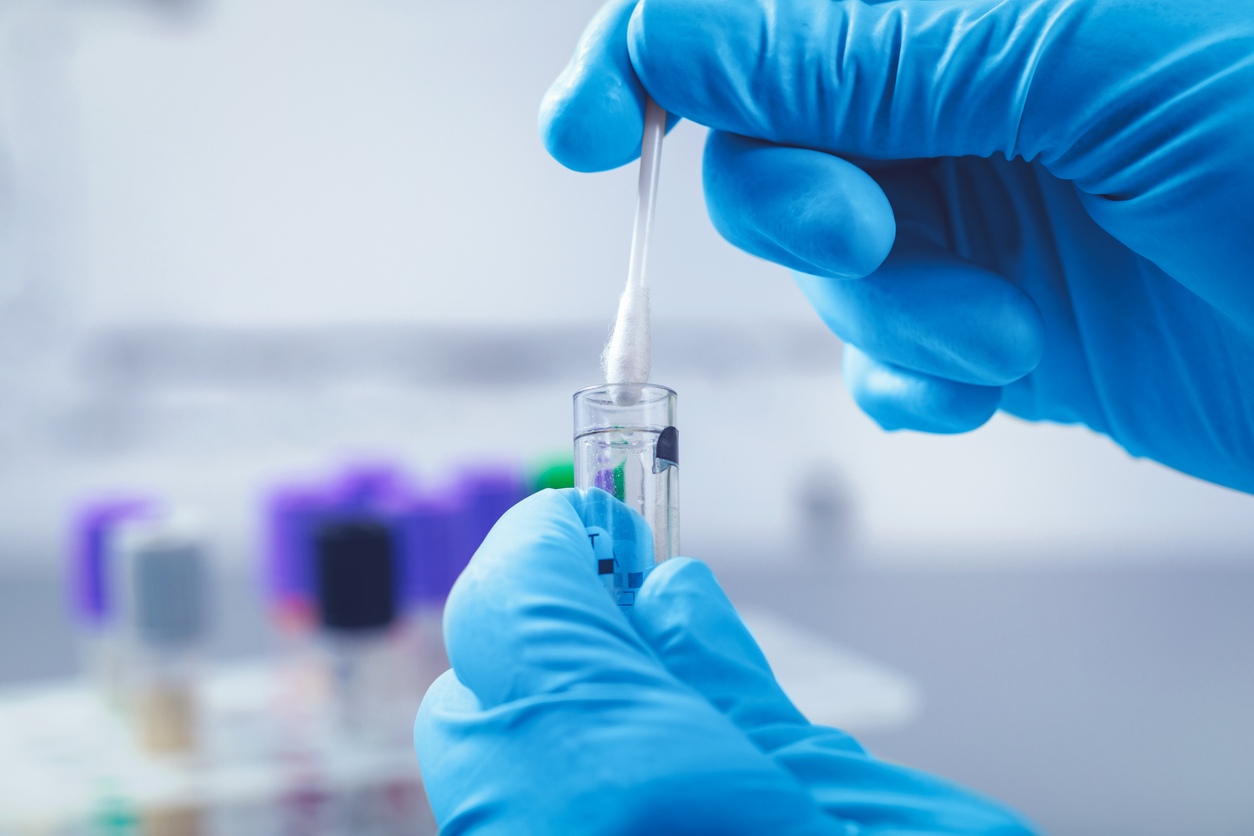Update 7 November 2025:
Following the staged approach foreseen by the Institutional Burials Act 2022 (the Act), ODAIT is now ready to launch the process set out in Part 4 of the Act and the ODAIT ID Programme Guidelines with a view to taking DNA samples from eligible family members.
The administrative scheme that allowed DCDE (the Department of Children, Disability and Equality) to take DNA samples from approximately 20 elderly and vulnerable family members is now at an end.
The ID Programme is what we call the process of trying to identify human remains recovered from the Tuam site by linking them with living family members using DNA samples taken from those human remains and DNA samples taken from relatives who participate in the ID Programme.
Part 4 of the Act provides for ODAIT and FSI (Forensic Science Ireland) conducting a DNA-led ‘Identification Programme’ to establish the likelihood that there is a familial link between people who believe they have family members buried at the Tuam site and the human remains that are recovered from that site.
- child
- parent
- sibling
- half-sibling
- grandparent
- grandchild
- aunt
- uncle
- niece
- nephew
- half-niece
- half-nephew
- grandniece
- grandnephew
ODAIT’s Identification Programme Policy Guidelines provide practical information and guidance on the operation of the ID Programme, setting out the rules governing participation.
What happens now?
- If you are one of the approximately 150 people who have already contacted ODAIT and expressed an interest in giving a DNA sample, ODAIT will contact you in the coming weeks to discuss the Application Process and Determination of Eligibility.
- If you believe that you are related to a person buried at the Tuam site and would like to provide a DNA sample, but have not yet contacted ODAIT, please review the section below ‘The Application Process – please explain’ and contact ODAIT to discuss the Application Process and Determination of Eligibility.
- If you have already given a DNA sample under the administrative scheme (or if you are the nominee of such a person), ODAIT will contact you in the coming weeks on how to transfer you from the administrative scheme (run by DCDE) to the ID Programme (run by ODAIT).
If you are a survivor of the Tuam Mother & Baby Institution (or are related to a survivor), please contact ODAIT and we will add you to our mailing list and keep you informed.
ODAIT will work closely with you, the applicant, to gather information and create a file that demonstrates those two points:
- There are reasonable grounds for believing that your relative (the deceased) is buried at the Tuam site.
- You have one of the following relationships with the deceased: child, parent, sibling, half-sibling, grandparent, grandchild, aunt, uncle, niece, nephew, half-niece, half-nephew, grandniece or grandnephew. The Act refers to these as eligible family members. Please see a family tree diagram that may help here.
- Public records e.g. a birth certificate, marriage certificates or death certificates.
- Where (a) is insufficient, other records e.g. institutional records, medical records or baptismal records.
- Where (a) and (b) are insufficient, an affidavit by an applicant.
- A Director may use the powers provided under section 27 and 29 of the Act in order to support the assessment of evidence provided by the applicant.
Objections are provided for in order to balance the public interest in identifying human remains recovered from the Tuam site with the privacy rights of close living relatives.
The Director will consider an objection on the basis of the closeness of the relationship of the applicant and the deceased, and the public interest of identifying human remains.
ODAIT will make reasonable efforts to contact possible objectors to inform them that the ID Programme is taking place and give them the opportunity to object.
Final wishes: You, the applicant, may express your wishes, to ODAIT, regarding final remains of the deceased.
See the relevant part of the Guidelines here
- Eligible family members interested in participating in the ID Programme
- Eligible family members’ objections/non objections
- Eligible family members expressing their wishes for final remains
- Whether an applicant meets the criteria of an eligible family member
- Deceased buried at the Tuam site?
- Close enough relative?
- The information provided to ODAIT to establish a familial link
- Letters of objection/ non objection, where applicable
In circumstances where the Director has determined that an applicant cannot provide their DNA sample, the applicant has the opportunity to appeal. See the relevant part of the Guidelines here
In the first instance, ODAIT will deal with the approximately 150 people who have already made contact about giving a DNA sample.
In early 2026, ODAIT will launch a Public Information Campaign to raise awareness in Ireland and abroad that an Identification Programme is taking place.
- ODAIT supervise the collection of two DNA samples. The first sample will involve you using a self-administered mouth swab to gently swab the inside of one of your cheeks for about 30 seconds. The second sample will involve you using another self-administered mouth swab to gently swab the inside of your other cheek for about 30 seconds each side, then firmly pressing the swab on a chemically treated sampling card until the sampling area turns from a pink to white colour.
- After collection, the DNA sample/s and associated documentation will be labelled, packaged and transported to Forensic Science Ireland (FSI) for DNA testing.
- FSI will extract DNA from your mouth swab sample/s.
- FSI will analyse your DNA using one or more DNA testing methods to generate your DNA profile/s.
- FSI will enter your DNA profile/s into a restricted DNA database to be periodically searched against DNA profile/s from the remains of unknown deceased persons recovered from the site of the former Mother and Baby Institution in Tuam. This is described in greater detail here.
See the relevant part of the Guidelines here
See the relevant part of the Guidelines here
In circumstances where the records available are not sufficient for the purpose of establishing an applicant as an eligible family member, it may be necessary for applicants to provide information by affidavit, at the request of the Director. This process will be managed with sensitivity.
Publication of decision under Section 46(8) of the Act
On 7 October 2025, I consulted with my Advisory Board as to whether ODAIT’s ID programme should continue. I am satisfied, pursuant to Section 46(6) of the Act:
(a) that there are family members of deceased persons believed to be buried in the principal burial land and, if applicable, ancillary burial land, still alive who may wish to participate in the Programme, and
(b) that Forensic Science Ireland (FSI) has determined, in accordance with subsection (5), that the quality of samples forensically tested by it is sufficient to generate DNA profiles and of a sufficient standard to enable DNA profile comparison.
Therefore, I have decided that ODAIT’s ID Programme will continue.
Daniel MacSweeney, Director

Contact details: Email: info@dait.ie Phone: +353 1 5391777 Post: Office of the Director of Authorised Intervention Tuam, Customs House, Flood Street, Galway, H91XV2C.
Update:
The Identification programme was launched on 7 November 2025.
The first DNA sample was taken under the Administrative Scheme in October 2023.

